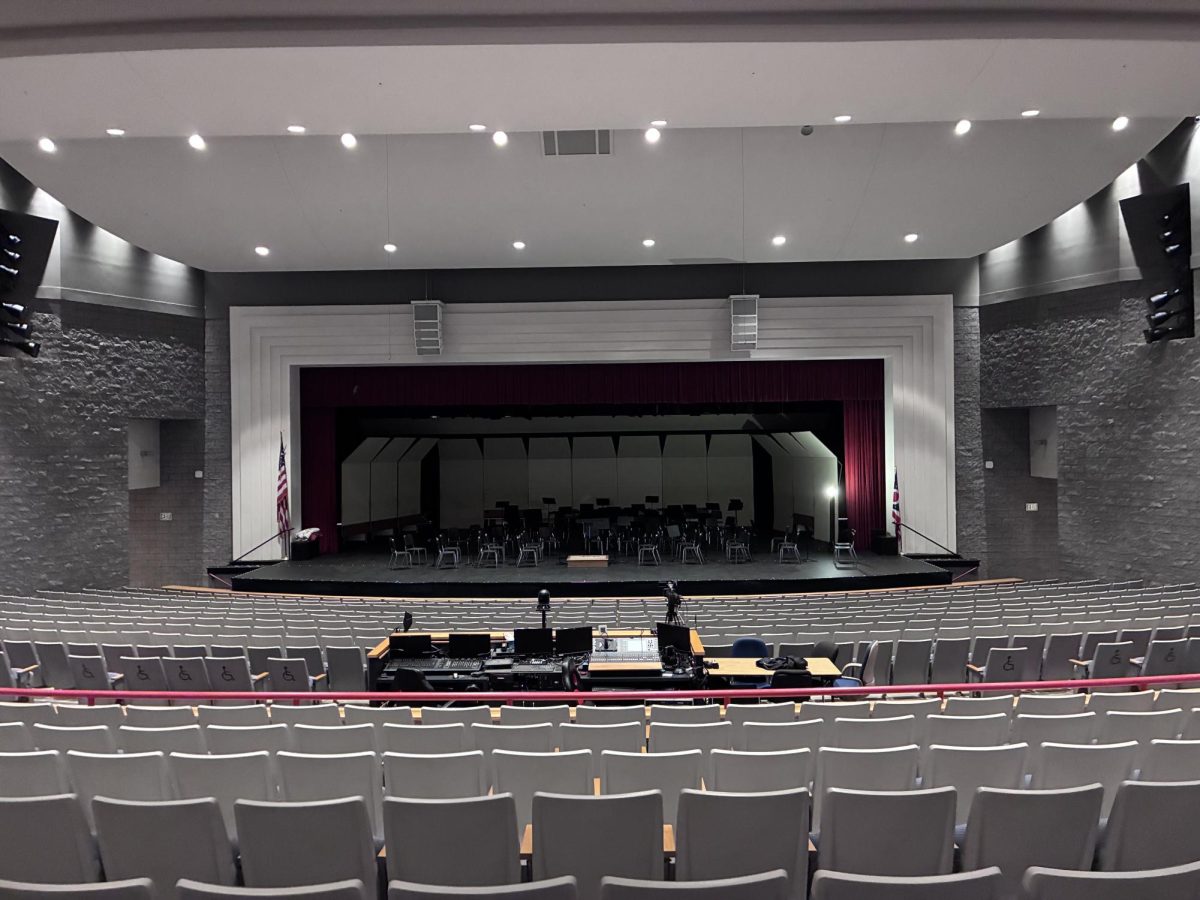You hear a distant train rumble. Ashen veils of clouds have been brewing all day, finally deciding to release their thrust of rain during the evening. The wind has picked up, but the sound of the storm is mellifluous.
Yet, the train becomes increasingly louder. The rain has grown in intensity, reaching uncomfortable levels of strength, and your house is being beaten with the crooked hands of broken tree branches. The deep rumble of the freight train transitions higher, now screaming with a chilling shrieking noise. A siren is the only sound that pierces through the train. The shrieking has multiplied with the roar of a hundred whistling trains. Deafened by the screeches, screeches of nails peeled from floorboards, screeches of metal grinding across a chalkboard, you run to the bathroom.
The terrifying monster arrives at the doorstep of your house. It does not care if you answer or not. It does not feel any emotion or reason. Gripping to the side of your tub, you hear the front door crumble. The monster is now an intruder. It creeps through the living room, leaving nothing behind with each step. Your bones vibrate and crack with each step of the intruder.
The police cannot save you. Self-defense cannot save you. You cannot save your children. You cannot protect your pets. You cannot claim adequate insurance on the destruction of your life’s work. The intruder has been looking, creeping, crawling through the house, and has found you in the bathroom. Opening the door, a shard of glass, once part of a framed memory, fatally pierces through your body, propelled by a vortex of piercing wind.
What sounds like fiction was a horrific truth for thousands. In 2011, what seemed like a nightmare was the crushing reality for so many who did not have the chance to wake up. 2011 is a year that became one of the deadliest for tornadoes in U.S. history, holding the record for the most deadly US tornado day since 1950, April 27. The year also contains the 5th deadliest U.S. tornado day, May 22. On these April and May dates, 314 and 159 people died, respectively.
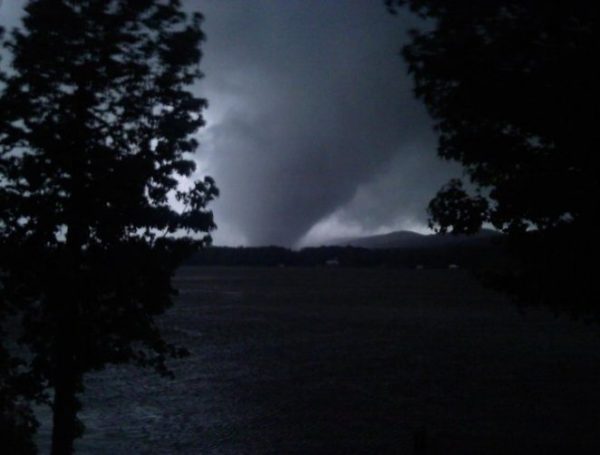
The storm system became known as the 2011 Super Outbreak. Over the course of 3 days, April 25 to 28, 175 tornadoes razed Southern, Midwestern, and Northeastern states including Louisiana, Alabama, Mississippi, and Tennessee, which experienced the greatest damages. Across the U.S., a total of 367 ripped through communities these fateful days. Several EF4 tornadoes were recorded, with a record number of EF5 tornadoes (four of them, an unprecedented event considering no more than one of these tornadoes occurs during a normal year), the most extreme ranking, also tearing the U.S. apart. Over $14 billion in damages accrued over the course of the outbreak, underscoring its monumental strength.
The outbreak was fueled by remarkable wind patterns. Canada pushed cold air into the U.S. which met a combination of moist air from the Gulf of America and dry air from southwestern states, creating a jet stream of high-powered and unstable air. The video attached shows satellite imagery of cloud movements. When watching closely you can see the huge masses of clouds being sucked into a small stream, showing where the tornadoes struck.
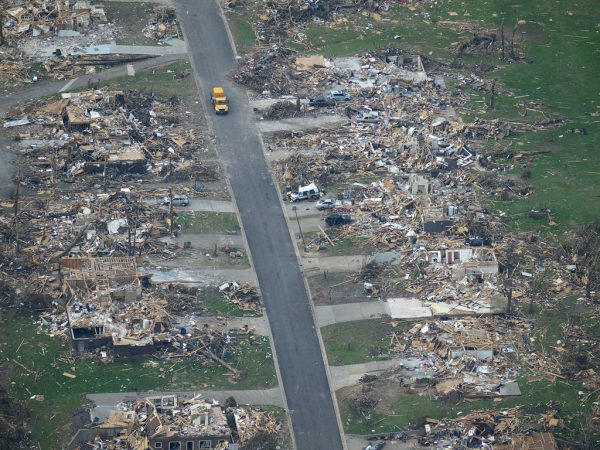
Within the Super Outbreak, the Joplin tornado and Tuscaloosa-Birmingham tornado stood out as some of the most violent and destructive vortexes. The Joplin tornado ripped through Joplin, Missouri, on May 22 during the late hours, lasting for just under an hour. The damages surpassed $2.8 billion, equivalent to $4 billion today, the costliest tornado in U.S. history. 158 individuals were killed, with over 1,000 injured, the deadliest tornado of the 2011 outbreak. Interestingly, this tornado inspired the creation of the Waffle House Index by the Federal Emergency Management Agency (FEMA). The index tracks the menu availability (full menu, limited menu, or closed) of individual Waffle House locations, a restaurant known for remaining open even in the most devastating storms. While such an index may seem trivial, it plays the important role of illustrating to overall strength and recovery of certain communities.
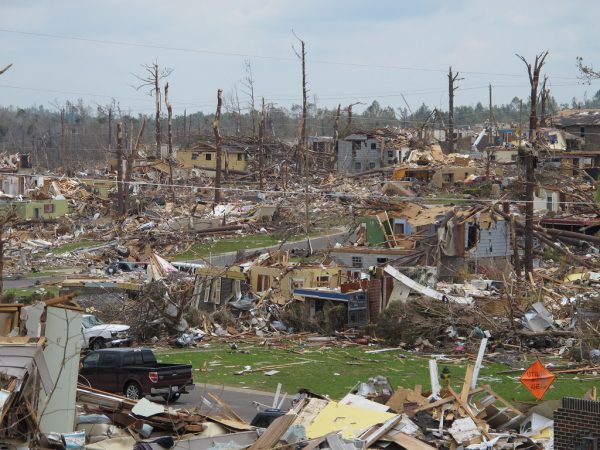
The 2011 Tuscaloosa-Birmingham tornado ripped through Tuscaloosa and Birmingham, Alabama, lasting for an hour and a half. 64 were killed, with another 1,500 injured from the disaster. The tornado was the second tornado to strike Tuscaloosa in two weeks, enhancing its devastation. $2.4 billion in damages were caused by the tornado, equivalent to $3.2 billion today. The live news reports from this storm are horrifying. Also, see this video showing the tremendous size of the twister
Immediately, response efforts were completely overwhelmed by the disaster. FEMA noted five substantial areas where significant problems were identified including an overall lack of preparedness for natural disasters in the area, a lack of extensive training for natural disaster management, a need for greater communication between local, state, and federal recovery initiatives, opportunities to improve response effectiveness through the Incident Command System (ICS) (a tool used for coordination), and a need for Public Works to better utilize the ICS.
Response operations took place 36 to 72 hours after tornadoes razed communities. In most areas, opening roadway access, searching and rescuing citizens, self-protection, and providing food and water to communities were among the highest priorities for rescue agencies.
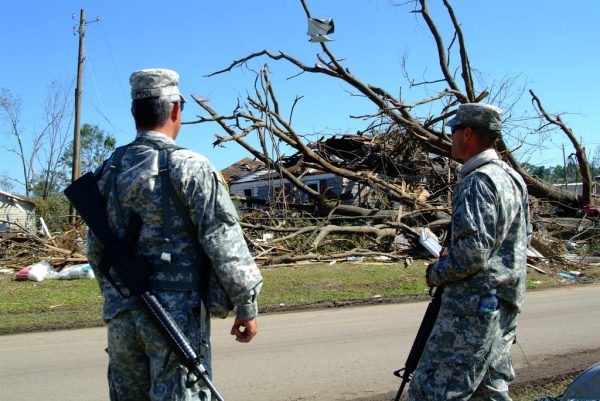
Overall, FEMA noted that while rescue and recovery operations were ultimately successful, there was tremendous room to improve particularly with issues surrounding communication, the proper roles of different groups, and an overall lack of resources to be utilized. Meetings were held among authorities from different states, with a notable influence from Georgia and Alabama, to help target and solve these issues. Expanded communication and training for disaster preparedness were facilitated. Also improved was the ICS, which worked in tandem with the aforementioned improvements to create faster and more effective responses to future natural disasters.








